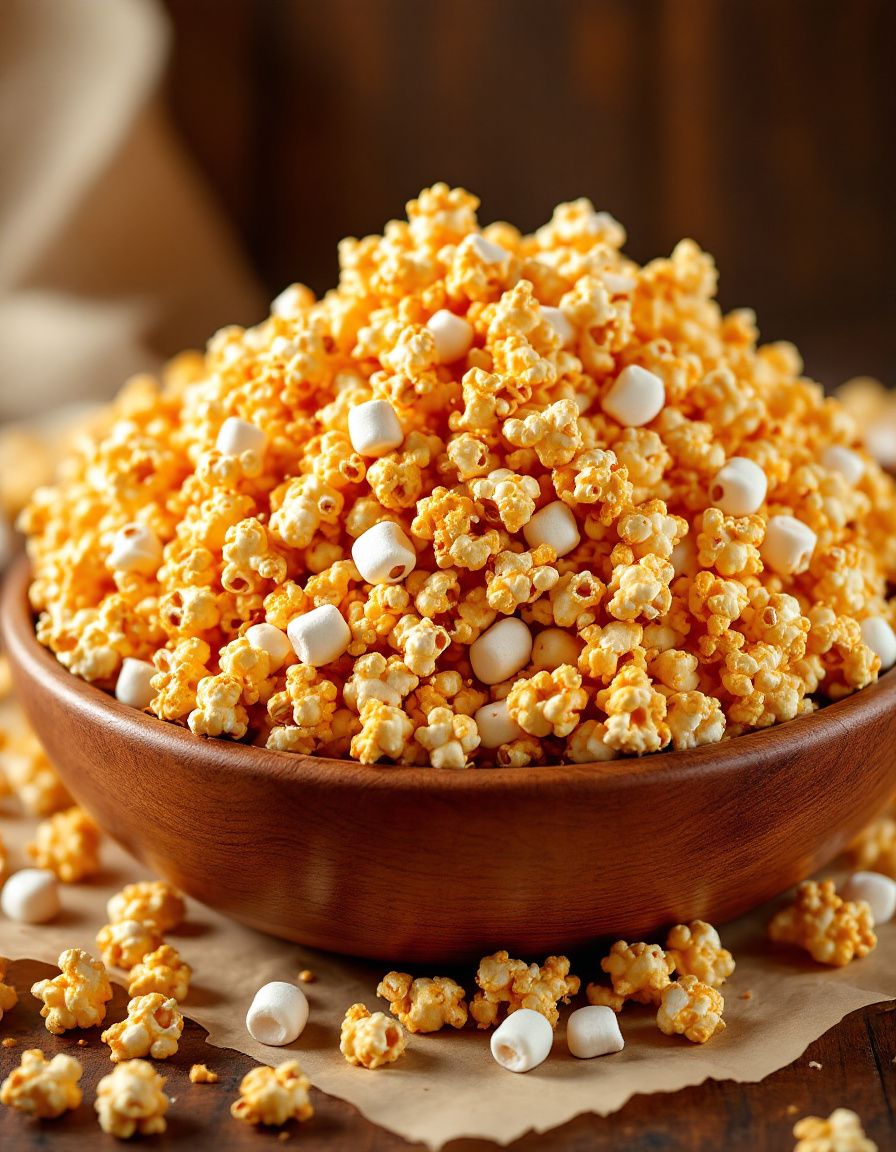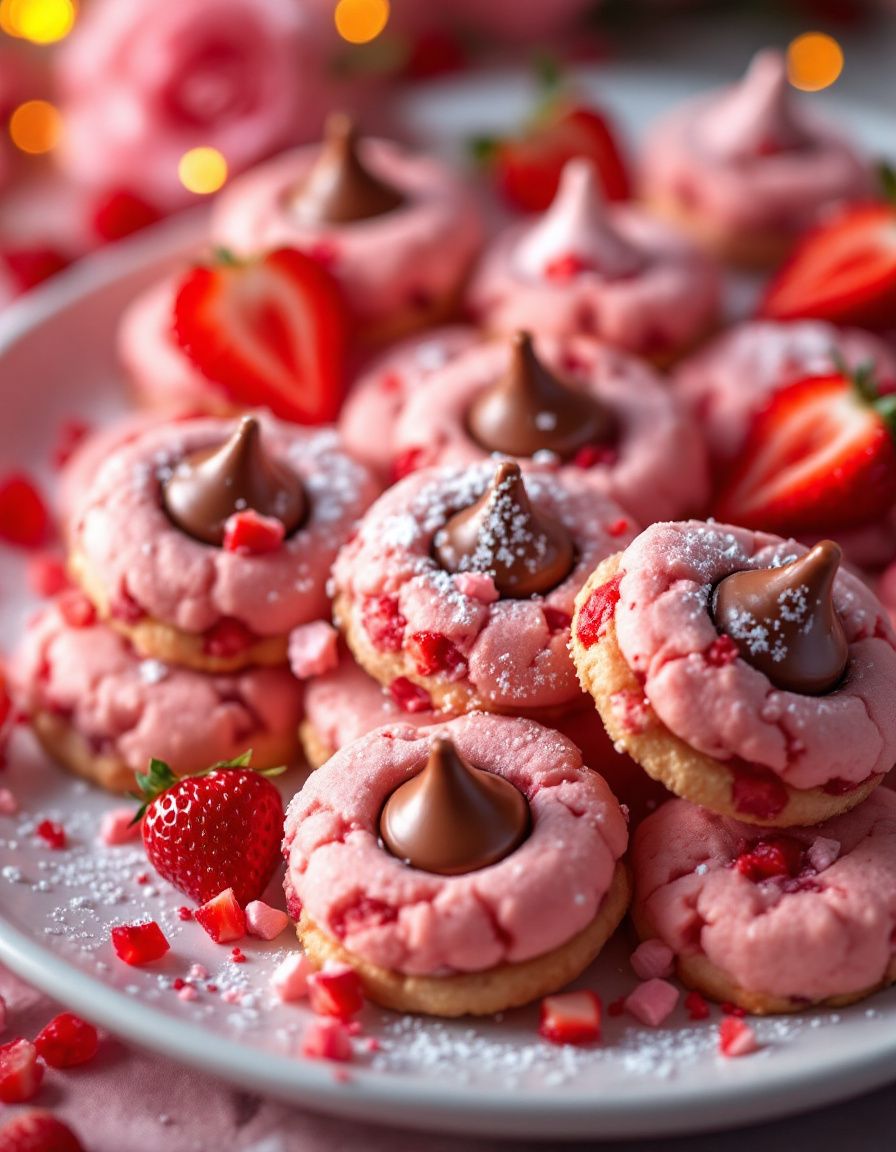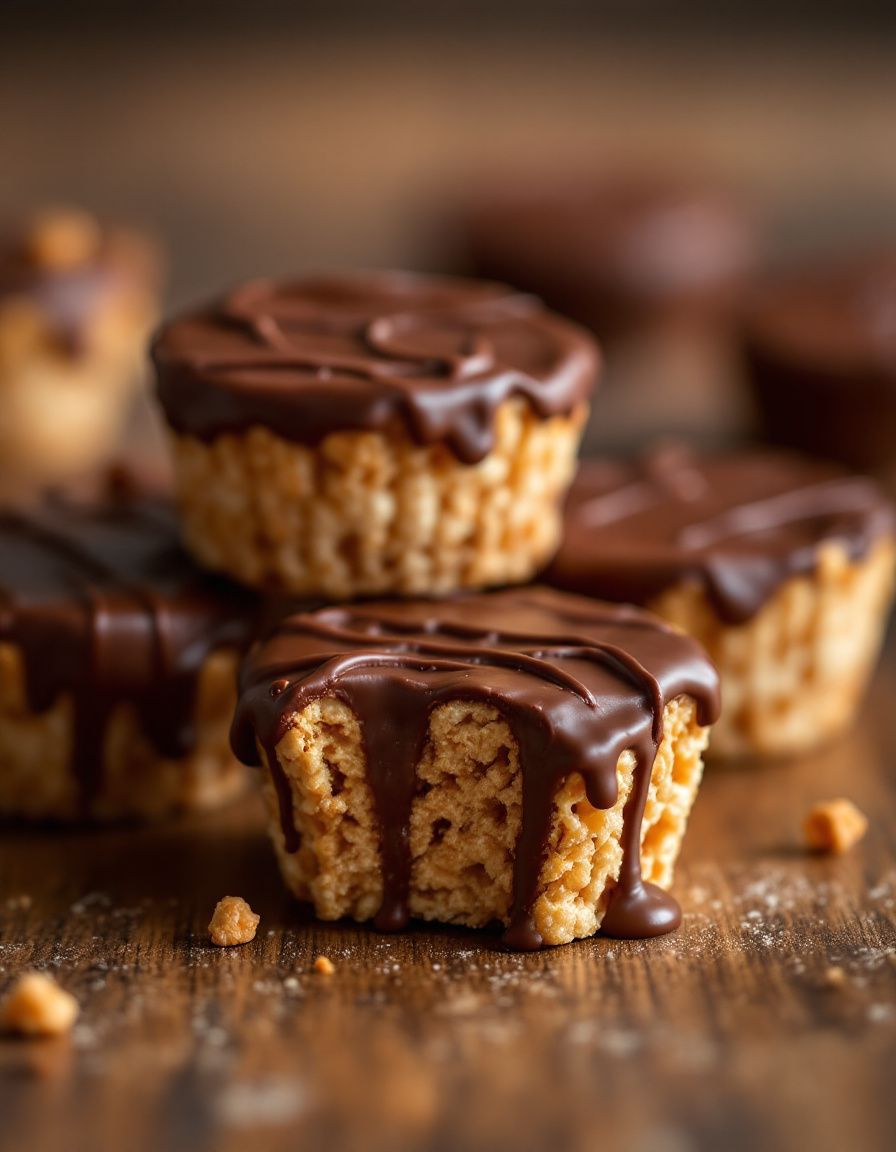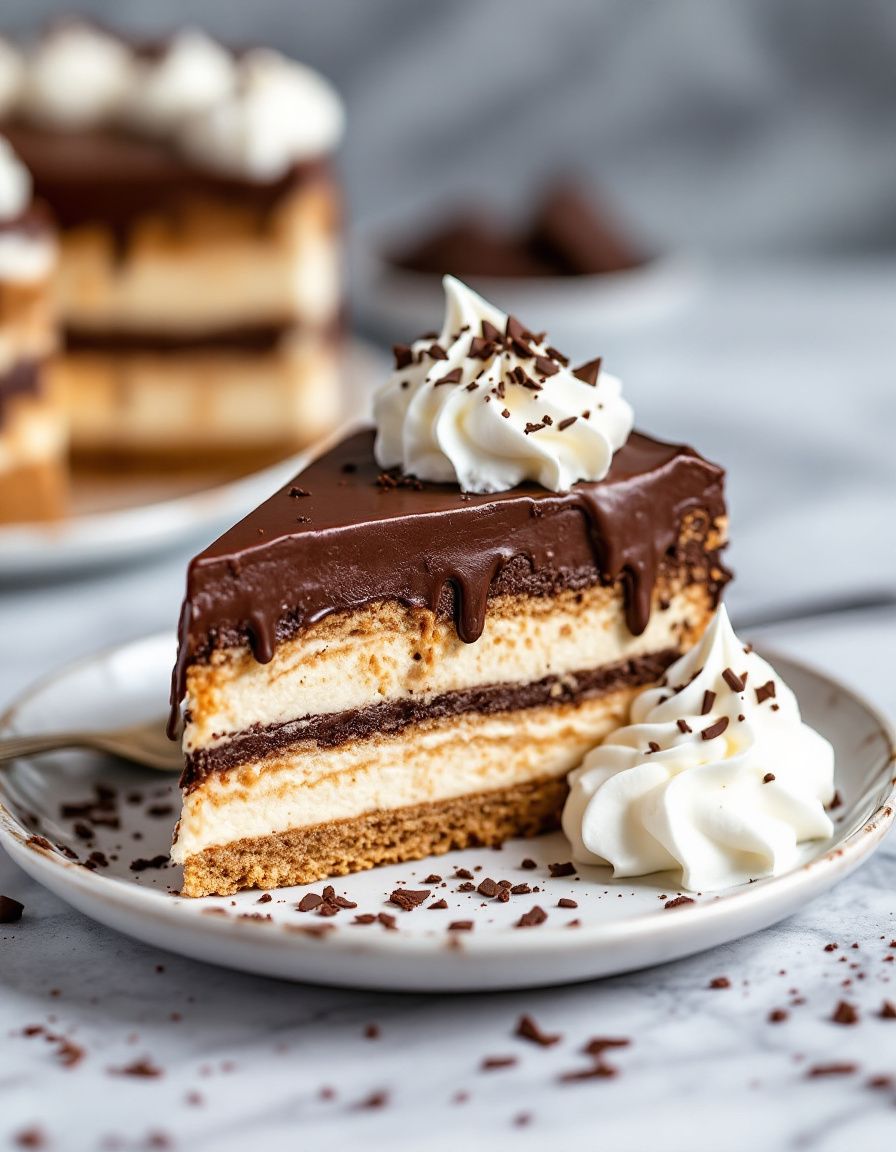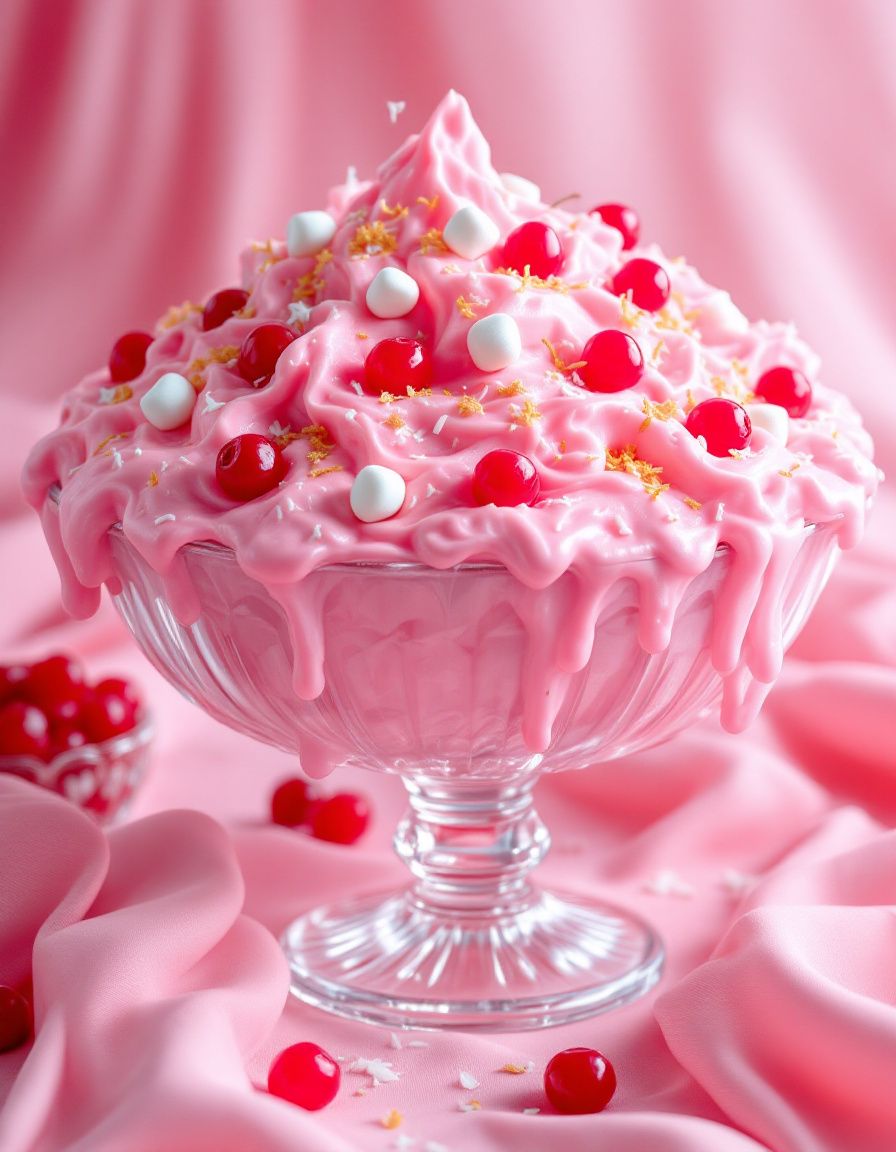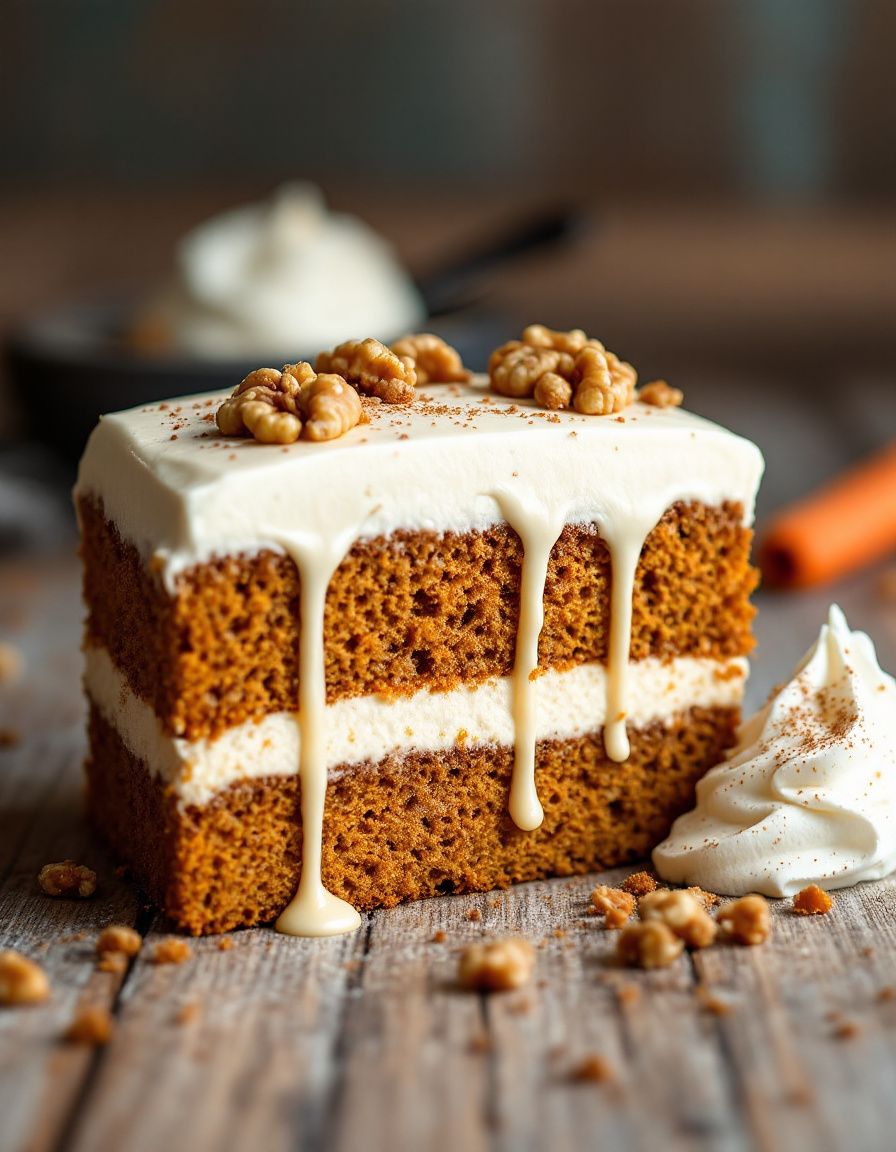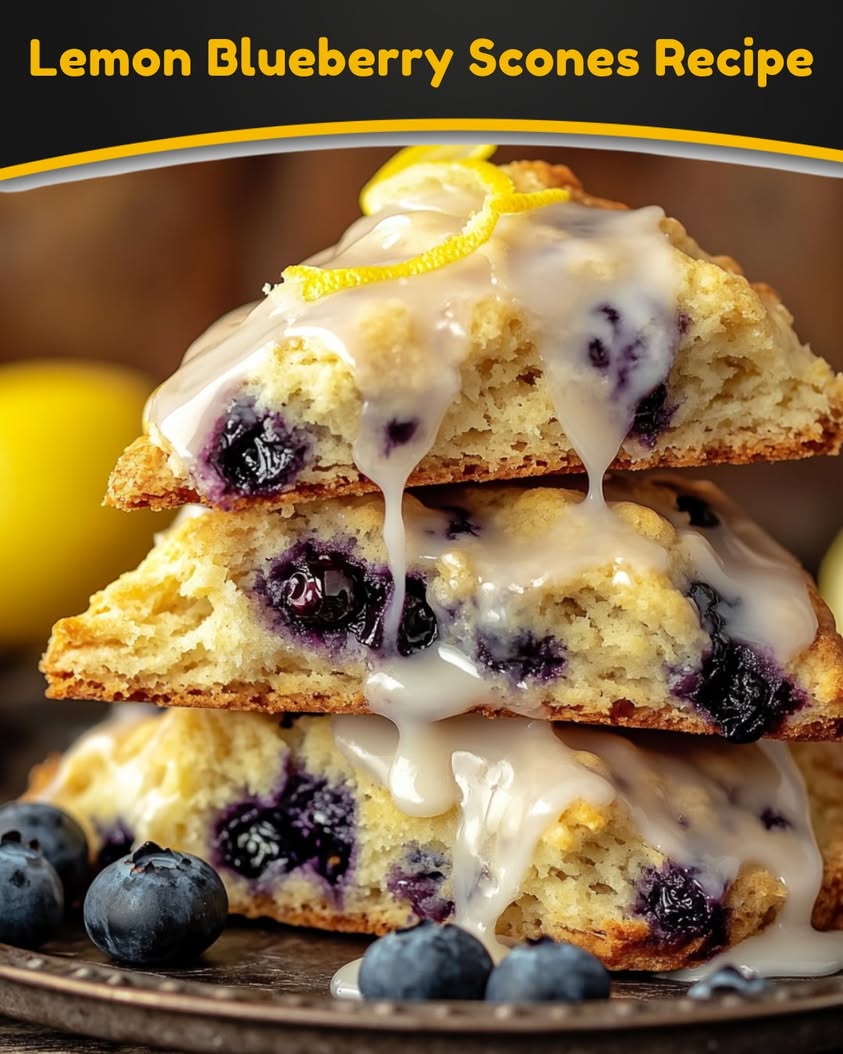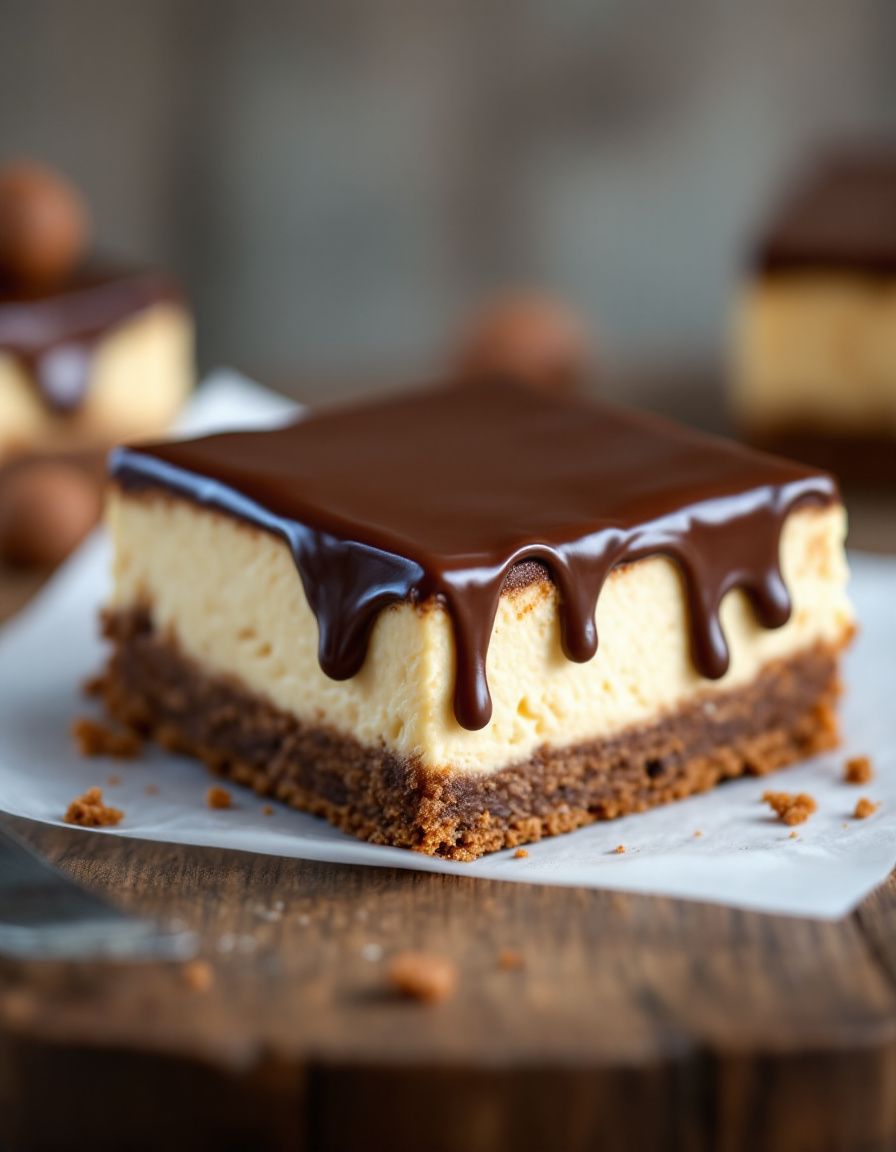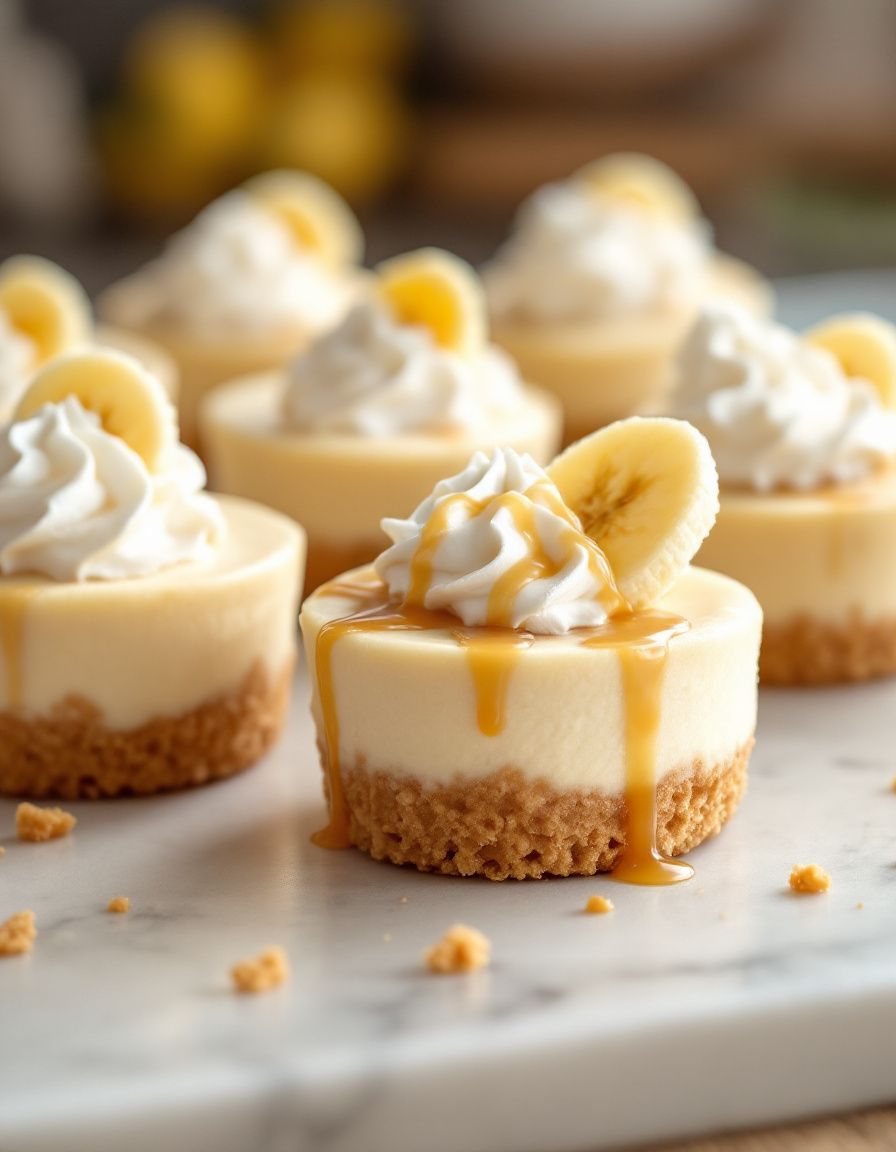Delicious Marshmallow Caramel Corn: A Sweet Treat for Everyone!
Experience the delightful combination of crunchy popcorn enveloped in a sweet, gooey marshmallow caramel coating. This Marshmallow Caramel Corn recipe is not just a treat; it’s an indulgent experience that is perfect for movie nights, parties, or just a snack to satisfy your sweet cravings. With every bite, you’ll get the satisfying crunch of popcorn contrasted by the rich and sweet caramel that will leave you wanting more.
The joy of preparing your own Marshmallow Caramel Corn lies in the intoxicating aroma that fills your kitchen as you melt the marshmallows and blend them with buttery caramel. The warm mixture is irresistible and makes the process enjoyable. As you mix the popcorn into the caramel, you’ll appreciate how each fluffy piece becomes a sweet little delight coated in sugary goodness, making it a treat that everyone will love!
Quick Recipe Highlights
- Flavor Profile: This recipe boasts a perfect balance of sweet and buttery flavors, with hints of vanilla from the marshmallows.
- Texture: You’ll experience a satisfying crunch from the popcorn, coupled with a chewy, gooey caramel layer that melts in your mouth.
- Aroma: The heavenly scent of caramelized sugar mixed with toasted popcorn creates an inviting and nostalgic aroma.
- Visual Appeal: The golden caramel-coated popcorn has a delightful shimmer, making it visually irresistible, especially when served in a festive bowl.
- Skill Level Needed: This is a moderate recipe, perfect for bakers of any skill level who are ready to tackle a fun sweet treat.
- Special Equipment: You’ll need a large pot for popping the corn, a baking sheet for cooling, and a good spatula for mixing.
Recipe Overview
- Difficulty Level: With a few steps and attention to detail, this moderate recipe is approachable for many home cooks ready to impress their guests.
- Category: This delicious dish fits perfectly into the dessert category, but it also makes an excellent snack for any occasion.
- Cuisine: While this recipe has American roots, its concepts are influenced by traditional candy-making techniques found worldwide.
- Cost: Ingredients are fairly economical, allowing you to treat a crowd without breaking the bank. Expect a total cost of about $10.
- Season: Best enjoyed during the festive holiday season, this treat can also be a delightful surprise at summer picnics.
- Occasion: Perfect for birthdays, movie nights, or holiday gatherings, this marshmallow caramel corn is sure to be a crowd-pleaser!
Why You’ll Love This Recipe
This Marshmallow Caramel Corn provides a unique taste sensation that combines the comforting flavors of popcorn with the sweet delight of caramel. Each bite offers a contrast of textures, where the crunchy popcorn meets the sticky sweetness of the caramel, creating a satisfying snack that’s hard to resist. Whether enjoyed alone or shared with friends, it’s a flavor explosion that will make your taste buds dance.
The preparation process is as enjoyable as the outcome. Melting the marshmallows and mixing them into the popcorn can be a fun family activity, encouraging teamwork and creativity. In just under an hour, you’ll create a homemade snack that feels gourmet, all while keeping your kitchen filled with laughter and joy.
Nutritionally, this treat, when enjoyed in moderation, offers a little pick-me-up during the day. Popcorn is a whole grain, providing fiber, while marshmallows and caramel add a burst of sweetness that can help curb cravings. By making it yourself, you can also control the ingredients and customize the sweetness to suit your preferences.
Bringing this sweet delight to parties makes you the star of the show. It lends itself beautifully to sharing, whether in a festive bowl or as individual bags for guests. The flavors are universally loved, making it an appealing addition to any gathering.
With the low cost of making a large batch, this recipe becomes an accessible treat for everyone. Perfect for family gatherings or movie nights, it’s easy to see how Marshmallow Caramel Corn can fit into any budget without sacrificing taste or fun.
Historical Background and Cultural Significance
The origins of caramel corn can be traced back to the late 19th century in the United States, where vendors began selling popcorn caramelized with sugar and often mixed with nuts. Over the years, this delightful treat evolved, becoming a staple at fairs and carnivals. The introduction of marshmallows not only enhanced the sweetness but also added a sticky texture that binds the popcorn together.
Culturally, Marshmallow Caramel Corn represents community and shared joy. It’s often featured at gatherings, allowing family and friends to bond over a delicious experience. The combination is especially popular during festive seasons, reminding many of childhood memories associated with celebrations.
As the recipe has evolved, various adaptations emerged to suit different preferences and dietary needs. From chocolate-drizzled variations to nutty inclusions, homemade caramel corn continues to inspire creativity in kitchens around the world.
Regional variations of this sweet treat often include local ingredients, such as spices or flavored extracts, but the fundamental love for this caramel-coated popcorn remains unchanged. Whether it’s a traditional recipe passed down through generations or a modern twist, Marshmallow Caramel Corn stays timeless.
Ingredient Deep Dive
Popcorn: Popcorn has significant cultural importance in many societies, often associated with celebration and gathering. It’s a whole grain that adds fiber to your diet, helping with digestion. When selecting popcorn, look for organic options for the best flavor, and store them in a cool, dry place to maintain freshness. Substitutions can include flavored corn kernels or alternative grains like puffed quinoa for a different texture.
Marshmallows: Originating in ancient Egypt, marshmallows were made from the mallow plant. Today, they are a sweet treat loved by many across the world, often associated with campfires and s’mores. While they are primarily sugar and corn syrup, marshmallows can bring a bit of nostalgia to desserts. When purchasing, be sure to select plump, fresh ones, and opt for allergen-friendly brands if necessary. They can also be substituted with gelatin alternatives for a vegan version.
Common Mistakes to Avoid
- Not using fresh popcorn: Old or stale popcorn can result in chewy pieces instead of the desired crunch.
- Overheating the marshmallows: Melting marshmallows too quickly can cause them to seize or burn, leading to an undesirable taste.
- Not adequately coating the popcorn: Ensure each piece is covered well with the marshmallow caramel; otherwise, some may be dry and tasteless.
- Using too much heat during cooking: Carefully manage the temperature to avoid burning the caramel and ruining the flavor.
- Not allowing cooling time: Rushing to eat the caramel corn results in gooey, sticky pieces instead of nice clusters.
- Skipping oil when popping corn: Without oil, popcorn may not pop well, leaving you with uneven kernels.
- Not greasing the pan: Forgetting to grease your baking sheet can result in difficult cleanup and sticking.
- Overmixing the marshmallow and popcorn: Too much mixing can cause the popcorn to break and lose its texture.
Essential Techniques
Popping the Corn: Use high heat to ensure the kernels pop quickly and evenly. Invest in a good-quality pot with a lid or an air popper. Listen for the popping sounds and remove from heat when they cease to maintain ideal texture.
Melting the Caramel: Gradually heat your sugar, butter, and corn syrup mix to create the perfect caramel without burning. Monitor the temperature with a candy thermometer for precision—ideal for achieving that golden color.
Pro Tips for Perfect Marshmallow Caramel Corn
1. Use quality popcorn kernels for the best flavor and texture.
2. Always melt marshmallows on low heat to prevent them from burning.
3. For a more complex flavor, add a pinch of salt to the caramel mixture.
4. Spread the caramel corn onto the baking sheet while it’s hot for easy shaping.
5. Allow cooling completely before breaking into pieces for serving.
6. Add nuts or chocolate chips for an exciting variation!
Variations and Adaptations
Regional variations of Marshmallow Caramel Corn may include adding nuts, such as peanuts or pecans, for a delightful crunch. Seasonal adaptations can incorporate flavors like pumpkin spice in the fall or peppermint during the winter holidays. Dietary modifications often include using gluten-free ingredients or dairy-free alternatives for the caramel. For texture variations, consider mixing in crushed pretzels or graham crackers for an exciting twist. You can also explore creative presentation alternatives by serving in decorative jars or festive gift bags for holidays.
Serving and Presentation Guide
When it comes to plating your Marshmallow Caramel Corn, choose a large, colorful bowl to showcase its golden hues. Garnish it with a sprinkle of sea salt or drizzles of melted chocolate for a gourmet touch. Serve in individual bags for parties or use cellophane wraps tied with ribbons as unique party favors. Temperature should be room temperature for the best flavor and texture. Additionally, use portion control by serving in small cups to demonstrate the treat visually.
Wine and Beverage Pairing
When pairing drinks with Marshmallow Caramel Corn, consider a light white wine like Moscato, which complements the sweetness beautifully. For non-alcoholic alternatives, try sparkling apple cider or a refreshing lemonade. If you’re looking for coffee pairings, a rich cappuccino works well, while a light herbal tea can also provide a pleasant contrast. Serve chill drinks alongside, but keep wine at a cool cellar temperature to enhance flavors.
Storage and Shelf Life
Store your Marshmallow Caramel Corn in an airtight container to keep it fresh for up to a week. It is best stored at room temperature, away from heat and moisture which can make it sticky. For longer storage, you can freeze it; just be sure to seal it well. Look for signs of spoilage, such as unusual odors or changes in texture, to determine freshness. For best results, avoid reheating; instead, enjoy it at room temperature.
Make Ahead Strategies
To enjoy this sweet treat anytime, consider making it a day in advance. Allow the caramel corn to cool completely before sealing it in an airtight container to protect its crunch. You can pop the corn the day before and store it separately, combining it just before serving to maintain freshness. When reassembling, allow it to sit out for a bit to soften slightly before enjoying; this helps achieve the right freshness and texture!
Scaling Instructions
If you’re looking to halve the recipe, simply divide all ingredients and cooking times accordingly. To double or triple the recipe, ensure to use a larger pot to accommodate more popcorn. Adjust cooking times as needed, keeping an eye on caramel melting. For storage considerations, be mindful of sufficient space in your containers to avoid crushing the popcorn.
Nutritional Deep Dive
Marshmallow Caramel Corn offers a delicious snack with a balanced macro profile. A serving provides carbohydrates primarily from the popcorn, along with sugar from the caramel and marshmallows. It’s important to consider the micronutrient content—while primarily indulgent, it can fit into an overall healthy diet when enjoyed in moderation. Incorporate it occasionally for satisfying your sweet cravings without overindulging. Given its lightness, this is also a great option for weight management when balanced within your overall meal plan.
Dietary Adaptations
For gluten-free versions, replace traditional marshmallows with gluten-free alternatives. Dairy-free options can explore coconut cream-based caramel. For a vegan take, skip both marshmallows and butter, opting for plant-based substitutes. Consider low-carb options by utilizing sugar substitutes, and keto adaptations by using nut-based popcorn. Paleo variations could swap out conventional caramel for homemade date syrup alternatives that provide natural sweetness without added sugars.
Troubleshooting Guide
If your Marshmallow Caramel Corn turns out too chewy, consider reducing the cooking time of the caramel slightly. For flavor balance, always incorporate a touch of salt to contrast the sweetness. Temperature issues can often be resolved by fine-tuning the heat during caramel preparation to prevent crystallization. Should you face equipment challenges, ensure your pot is large enough to allow for optimal popping. Ingredient substitutions may lead to texture changes; always test small batches first. Timing concerns can simply be mitigated by prepping ingredients ahead of time.
Recipe Success Stories
Community feedback often highlights the joy of making this Marshmallow Caramel Corn with loved ones. Families share stories of successful batch variations, incorporating seasonal spices or chocolate drizzles. Readers have suggested excellent photography tips that showcase the treat’s texture and shine—many include it in festive celebrations. Adaptation stories include crafting gluten-free versions, allowing even more people to enjoy this sweet snack together.
Frequently Asked Questions
How do I keep my marshmallow caramel corn crunchy? Store it in an airtight container. Make sure it cools completely before sealing to avoid steam condensation, which can create sogginess.
Can I make marshmallow caramel corn in advance? Yes! It can be made several days ahead. Just store it properly, and it will maintain its delicious taste and texture.
What type of popcorn is best for this recipe? Use high-quality kernels, such as organic popcorn, which pops better and has superior flavor. Avoid pre-packaged varieties that may contain extra flavorings.
Can I substitute ingredients in this recipe? Absolutely! Feel free to swap regular butter with dairy-free alternatives or use plant-based marshmallows for a vegan option.
Is it necessary to use salt in this recipe? While it’s not essential, a pinch of salt can enhance the flavor and balance out the sweetness effectively.
What’s the best way to store leftovers? Store any leftover Marshmallow Caramel Corn in an airtight container at room temperature for up to a week.
Can I freeze marshmallow caramel corn? Yes, it can be frozen for longer storage. Just ensure it is well-wrapped to avoid freezer burn.
Could I add nuts to my marshmallow caramel corn? Yes, adding nuts like peanuts or cashews can introduce a delightful crunch and deepen the flavor profile.
What should I do if my caramel becomes too hard? If your caramel is too hard, it may have been cooked for too long. Ensure to monitor closely next time and remove it from the heat as soon as it reaches a golden color.
Can marshmallow caramel corn be made vegan? Yes! Use vegan marshmallows and substitute traditional butter with vegan butter or coconut oil.
Additional Resources
For more delightful recipes, check out our collections of sweet treats and snacks. Helpful technique guides on candy-making and popcorn popping can elevate your dessert game. Consider ingredients information to learn more about how to choose quality products and stock your kitchen wisely. Equipment recommendations for perfect popcorn poppers and mixing tools help ensure successful preparation and enjoyable results. Seasonal variations can further inspire your cooking adventures!
Join the Conversation
We encourage you to share your Marshmallow Caramel Corn creations on social media! Use our hashtag and tag us in your photos for a chance to be featured. We love to see your variations and hear your feedback! Join the community by leaving comments with recipes suggestions or simply sharing your thoughts on this delightful treat. Let’s keep the conversation going about delicious snacks and share ideas for making them even better.
The Recipe
Marshmallow Caramel Corn
Serves: 12 servings
Prep Time: 15 mins
Cook Time: 30 mins
Total Time: 45 mins
Kitchen Equipment Needed
- Popcorn popper or large pot with lid
- Baking sheet
- Large mixing bowl
- Spatula
- Candy thermometer (optional)
Ingredients
- 1 cup popcorn kernels (or 10 cups popped popcorn)
- 1 cup granulated sugar
- 1/2 cup unsalted butter
- 1/4 cup light corn syrup
- 1/2 teaspoon salt
- 2 cups mini marshmallows
- 1 teaspoon vanilla extract
Directions
- Pop the popcorn kernels according to package instructions; place popped corn in a large bowl and set aside.
- In a saucepan, combine the sugar, butter, corn syrup, and salt over medium heat. Stir continuously until the mixture begins to boil.
- Allow the caramel to boil without stirring for 4-5 minutes, or until it reaches a deep golden color.
- Remove from heat and carefully stir in marshmallows and vanilla extract until completely melted and blended.
- Pour the caramel mixture over the popped popcorn and stir quickly until evenly coated.
- Spread the coated popcorn on a baking sheet and let cool before breaking into pieces.
Recipe Notes
- For a chocolate twist, drizzle melted chocolate over the cooled caramel corn.
- You can add nuts or other mix-ins like M&Ms for additional flavor.
- Store in an airtight container at room temperature for optimal freshness.
